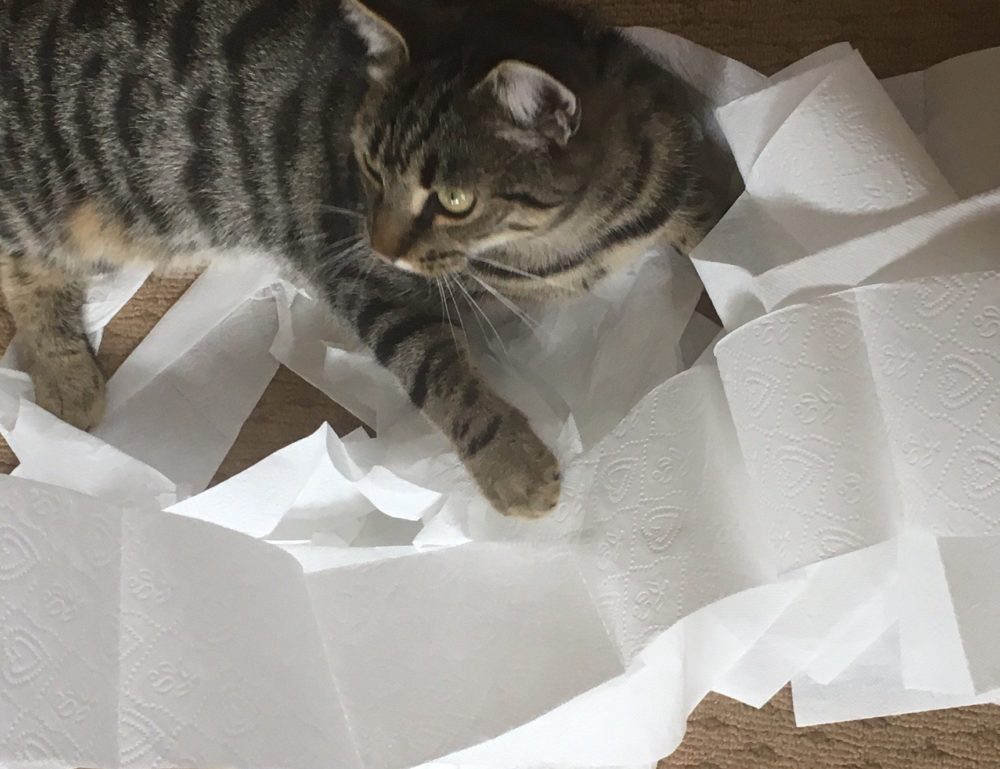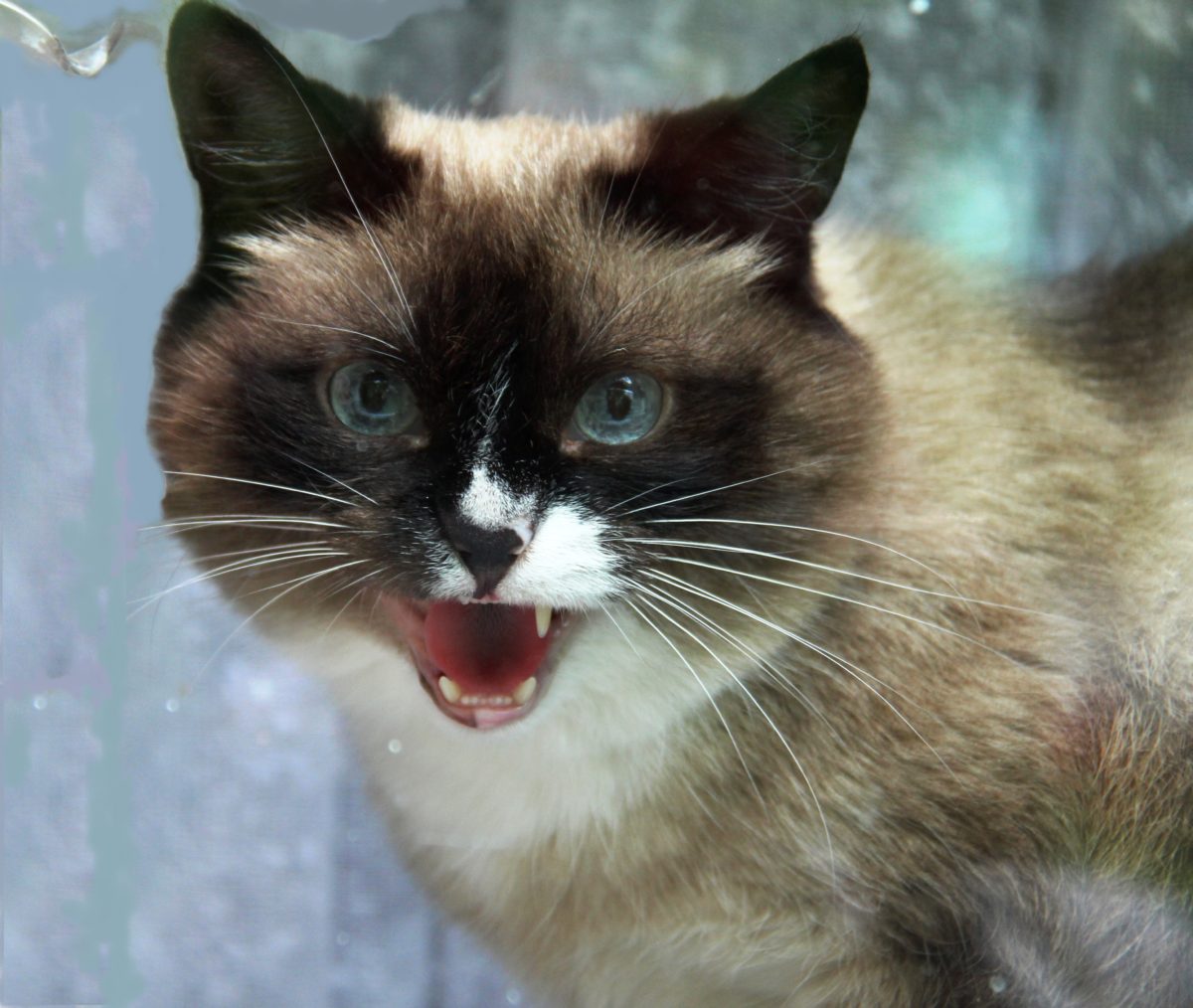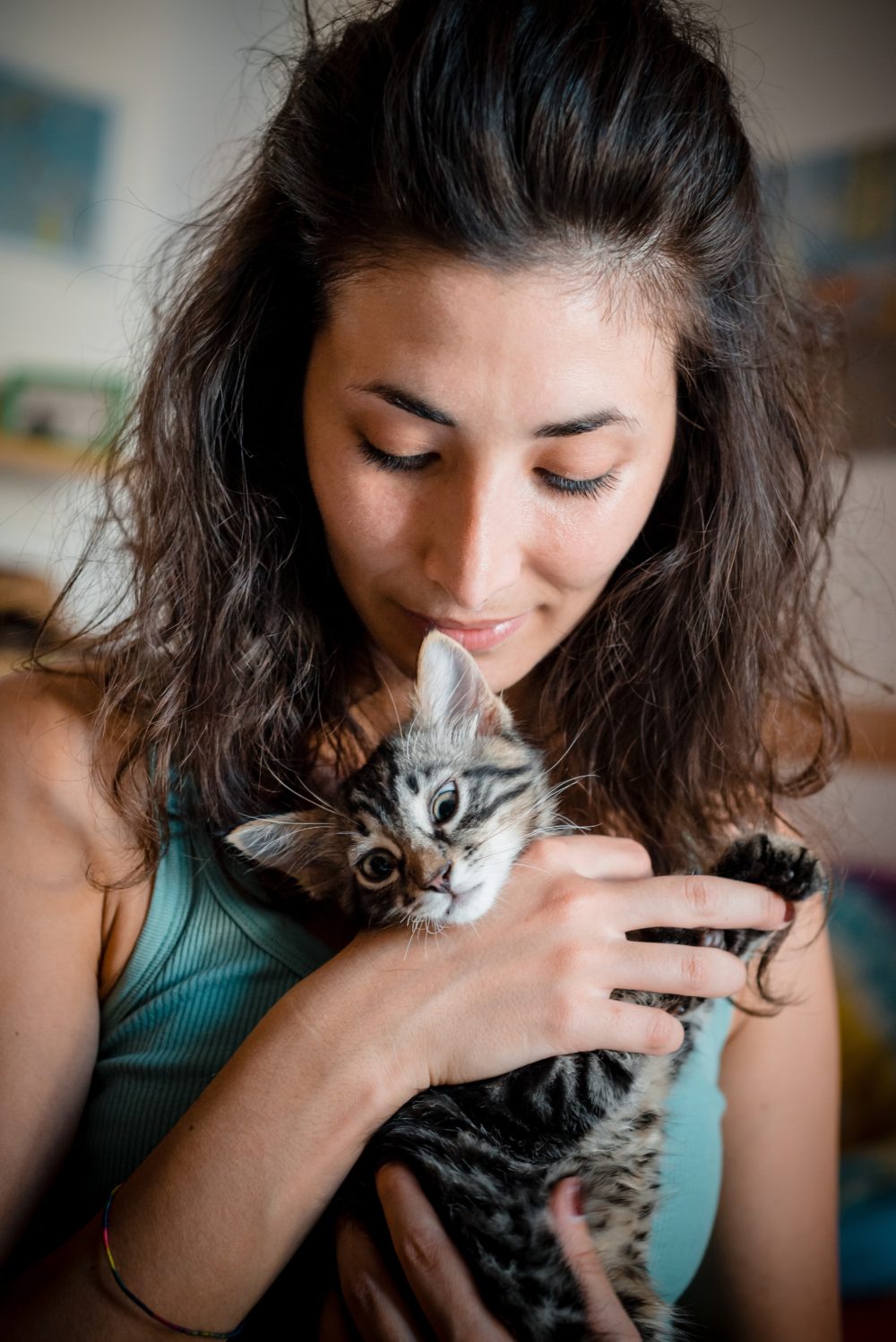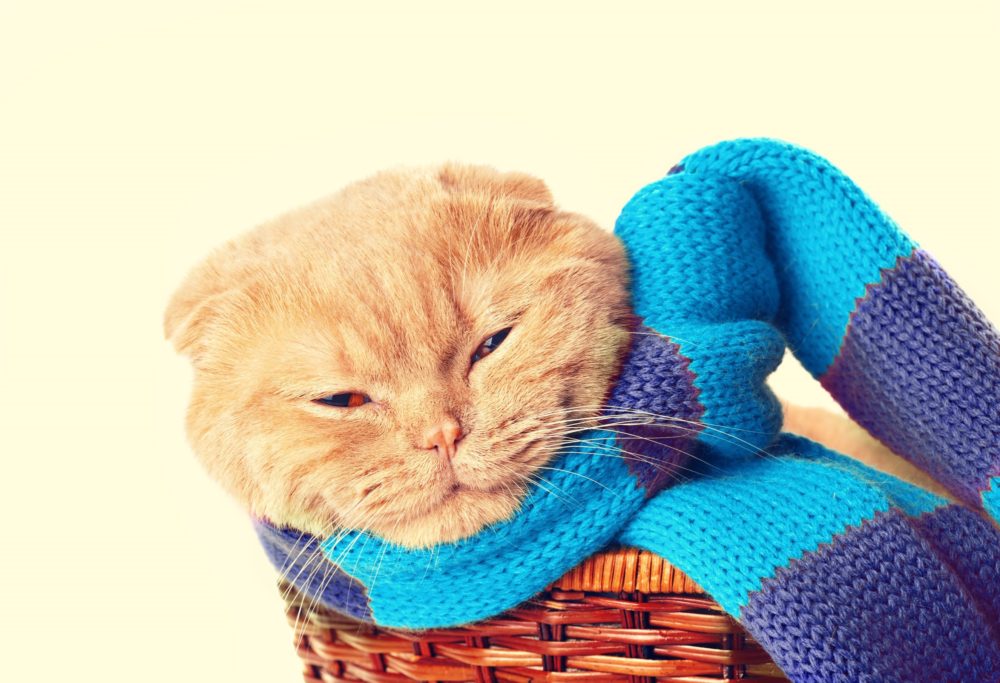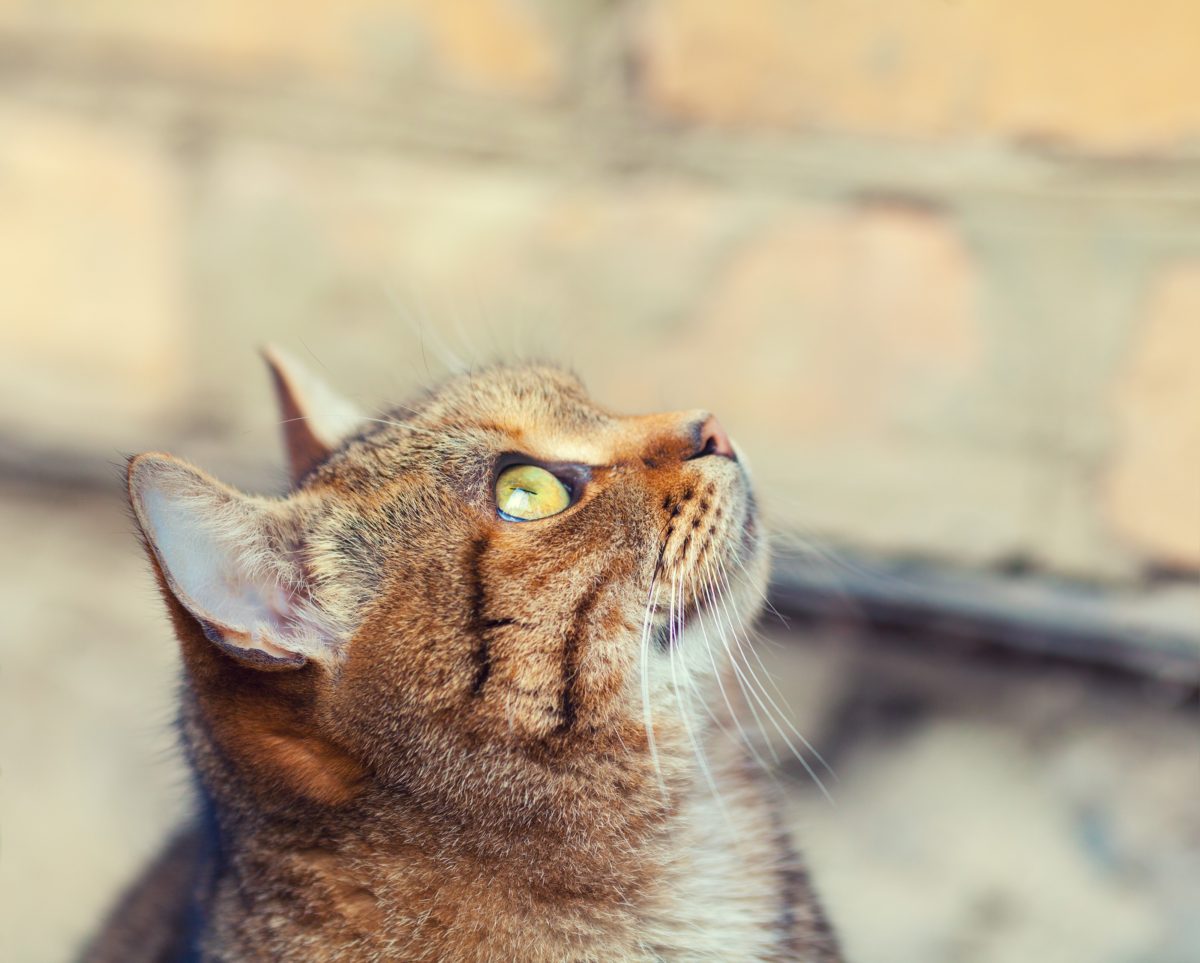
8 common feeding problems in cats and how to solve them
When it comes to mealtimes and food, cats can be very fussy. It can be difficult to understand what triggers some of their behaviours and how to solve these tricky problems. Here we will look at the 8 most common feeding problem, what can trigger these behaviour patterns, and tips for fast and easy solutions. If in doubt about your cat’s health or behaviour, do not hesitate to contact your veterinary for advice.
The 8 common feeding problems addressed in this article will be:
– My cat is always meowing for food
– My cat is eating indoor plants
– My cat vomits often due to eating too quickly
– My cat is always begging for human food
– My cat raids the kitchen bin
– My cat takes her food out of the feeding bowl
– My cat drinks water out of the toilet bowl
– My cat refuses to drink water
1. My cat is always meowing for food
It is very easy to over feed your cat which can lead to an overweight cat. Obesity is an increasing problem amongst cats and feeding on demand is one of the main causes. More often than not, this is simply a self-taught lesson by your cat – when she cries or is meowing it will often lead to a tasty snack or an extra meal! If your cat is healthy and is fed a regular balanced meal, then constant meowing for food is merely a habit.
Try the following tips to avoid unnecessary over feeding:
– Feed your cat little and often.
– Ignore any demands for food, wait until the meowing stops – then feed her.
– Before meal times, introduce a play session with your cat, this will imitate their instinctive behaviour to hunt then eat.
– Introduce activity feeding
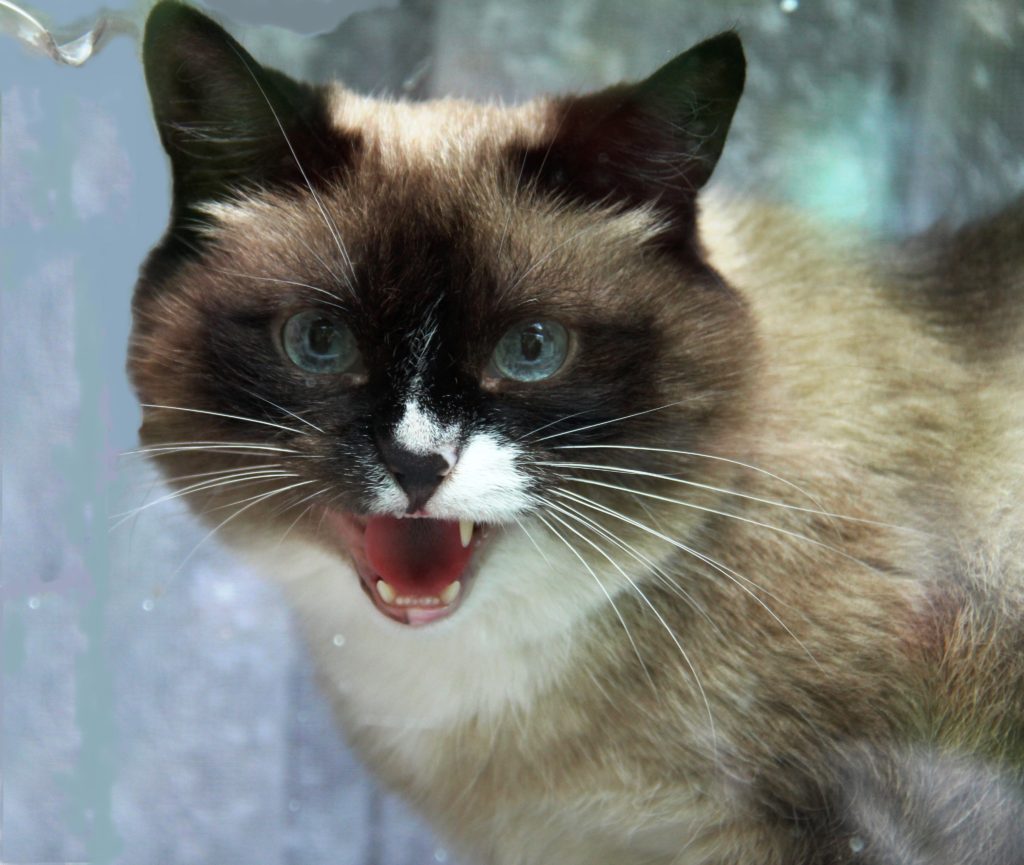
What is activity feeding?
Household cats do not need to hunt for their food and this can lead to boredom and reduced activity. By introducing activities which require your cat to work for her food can enhance her life – this is activity feeding. The food used in activity feeding should be part of her daily allowance of food, do not give extra food.
There are plenty of gadgets you can purchase to introduce activity feeding but there are easy ways to make these yourself. Try the following easy methods to introduce activity feeding:
– Use a clean, dry, empty plastic bottle. Make some holes in it – large enough for dry food pieces to fall out. Put some of her dry food allowance into the bottle. Your cat will soon work out that rolling the bottle will result in some tasty dry food.
– Divide your cat’s regular meal portion into several smaller bowls and place in different but easy to reach locations. This searching for her meals around the house encourages her natural foraging predatory behaviour. The portions can become more challenging to find as she masters the new locations.
– Scatter some of the dry food allowance on the floor for your cat to sniff out and eat. Her hunting skills can develop over time as she tries to catch the dry food as you throw it.
2. My cat is eating indoor plants
Many cats enjoy grass as a little snack. Grass is perfectly safe for cats and actually provides vitamins, minerals and roughage. With no access to grass, indoor cats may start to nibble on indoor plants which can be poisonous to cats, even resulting in death. This behaviour can be easily dealt with by:
– Providing your cat with safe alternatives to indoor plants such as seedling grass in containers. These are available from your pet store or make your own! We have a terracotta pot with grass in our catio – our cats love it!
– Ensure any house plants you do have are safe for cats. There are anti chew sprays available to deter any chewing.
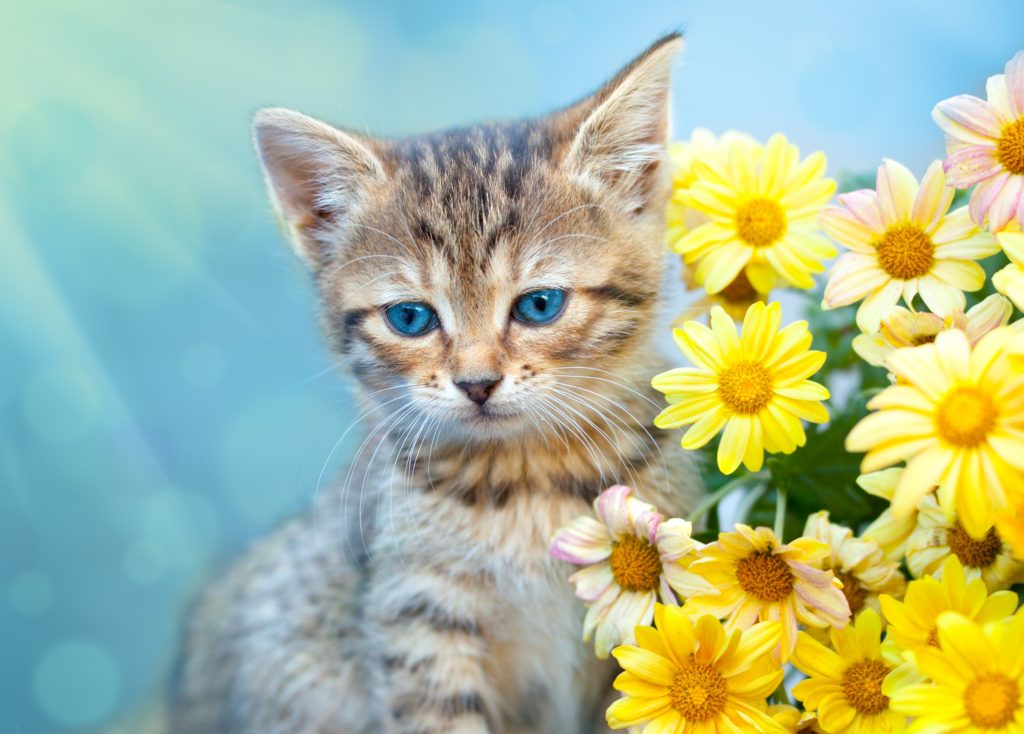
Toxic house plants for cats include:
– Lilies
– Amaryllis
– Aloe Vera
– Carnations
– Chinese Jade
– Cyclamen
– Hyacinth
– Daffodils
– Poinsettia
– Orange
– Ivy
– Tulip
– Yucca
This list is by no means exhaustive, please check if house plants are safe before allowing your cats access to them.
3. My cat vomits often due to eating too quickly
Some cats may gulp their meal so fast that it causes them to be sick soon after. There are several possible causes that your cat may eat so quickly:
– It is important to eliminate any medical conditions such as hyperthyroidism or worms. A visit to your veterinary will eliminate these conditions or provide treatment if necessary.
– If your cat hasn’t been with you from birth it may be that she’s had a tough time earlier in her life and uncertainty regarding her next meal.
– Lack of stimulation and boredom may cause gulping of meal.
– Eating in close proximity of other cats.
The following tips may help to remedy this problem:
– If other cats are a possibility of being the problem, try keeping their food and water in separate areas
– Introduce smaller meals served more frequently
– An automatic timed feeder will allow control over timing and portion size
– Introduce puzzle feeders and activity feeding which will reduce any boredom and lack of stimulation issues. See section 1 earlier in this article for ideas on activity feeding.
– Try mixing wet food with dry food – this should be more difficult to eat quickly.
– Another simple but effective idea is to serve the meal in a cupcake tin! This will prevent your cat gulping the meal so quickly as they move from segment to segment of the tin.
– Spreading the food out on a flat tray or plate can will take longer to eat.
– Putting a couple of golf balls on her food will also slow down her eating.
4. My cat is always begging for human food
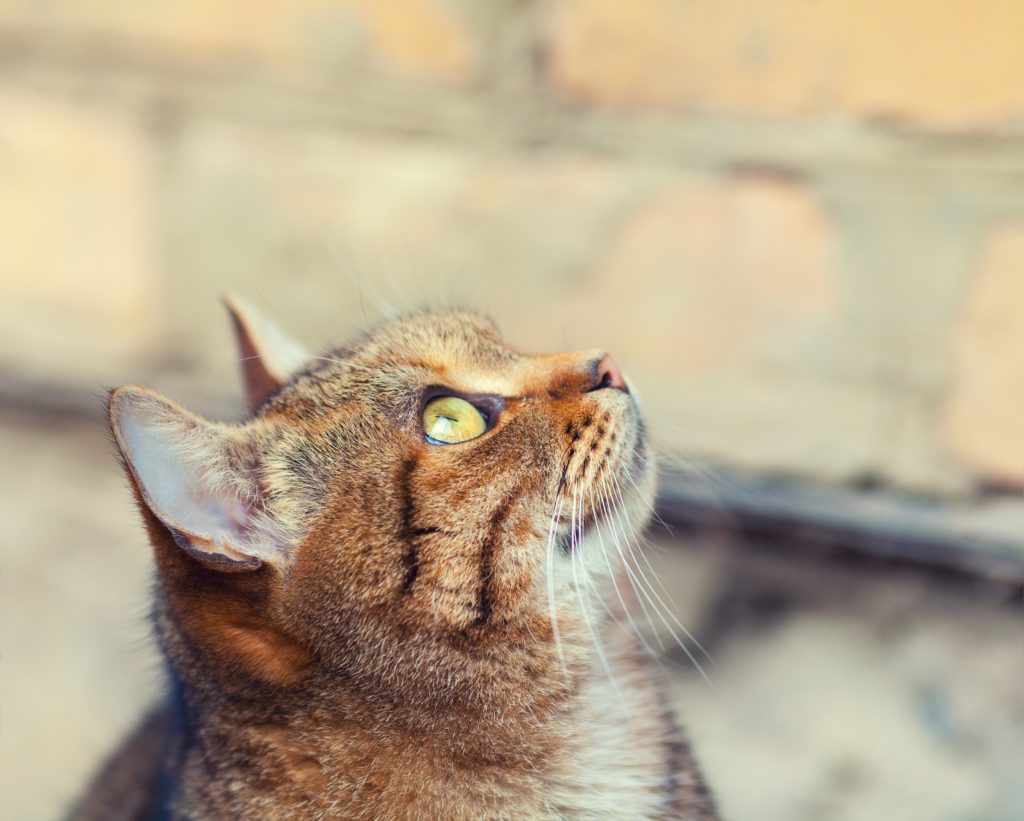
It’s easily done – a little bit of chicken left on your plate, those big kitty eyes looking at you, begging for a little piece to share, how can you refuse? But once you start, it’s a habit that your cat may expect over and over. Apart from your cat constantly begging for left overs it is not recommended since many human foods are not suitable for cat consumption. Some human foods can upset a cat’s stomach and some human foods are indeed toxic to cats. It can also upset her nutritional balance and lead to obesity. Some of our human foods not suitable for cats include:
– Chocolate
– Grapes and raisins
– Avocado
– Alcohol
– Onion and garlic
– Green tomato
– Raw green potato
It is therefore safer not to get into the habit of giving your cat any human food.
If your cat constantly begs, the following tips may help to reduce this problem;
– Use puzzle feeders for some of her dry food to ensure she has plenty of stimulation.
– Simply ignore any begging for food, remain calm and do not give any attention to the attention seeking.
– Do not allow your cat into your dining room or wherever you may have your meal.
– Feed your cat immediately before your own meal time. Your cat is less likely to beg for your food if she is already full. Also, since cats typically groom or nap after a meal, feeding your cat before you eat will keep her busy while you enjoy your meal.
– Never allow your cat to eat food from the table, your plate, or from any dish other than her own.
5. My cat raids the kitchen bin
Cats are opportunists and even the best fed will take an opportunity for some extra tasty scraps. Although digging in the bins may be fun for cats, rubbish bins can be dangerous. The following tips may help to stop your cat raiding the bins;
– Ensure bins are relocated out of access. Place kitchen bins in a cupboard or fit child-proof latches on their lids.
– Cats are sensitive to the smell of vinegar or citrus, spraying the bin with these scents will deter cats.
– If the cats are tipping the bins over simply placing a heavy object in the bottom, a brick or stone, will prevent this.
– Most cats dislike sticky paws so putting double sided sticky tape on the lid will also help
– Feeding your cat smaller meals several times a day or using an automatic feeder may lessen the need to go searching for snacks.
6. My cat takes her food out of her feeding bowl
There are several reasons a cat may take her food out of her bowl to eat it from the floor. It may be that your cat is merely obeying her natural instincts. Most cats, wild and domestic, prefer to eat and hunt alone ensuring other animals cannot steal their food or intrude on their eating time. Removing her food from the bowl can ensure her meal is eaten in the quickest and easiest way. If a feeding bowl is too deep, cats may be uncomfortable if it prevents them from seeing their environment whilst eating. Removing the food from the bowl onto the floor will ensure they can look up while feeding.
Some cats, especially flat faced cats, do not like having their whiskers squashed into the bowl. Whisker tips are very sensitive and excess pressure on them can cause discomfort and pain.
Tips to eliminate this messy problem can include:
– If you have more than one cat, separate their feeding and water stations.
– Try changing your cat’s bowl to one that is flat and shallow.
– Ensure your cat’s food and water bowls aren’t too close.
– If your cat’s wet food contains large chunks of food, try cutting into smaller pieces as this may be easier to manage for her.
– If all else fails, a placemat beneath her feeding bowl will help keep your flooring clean and be easier to keep clean.
7. My cat drinks water from the toilet bowl
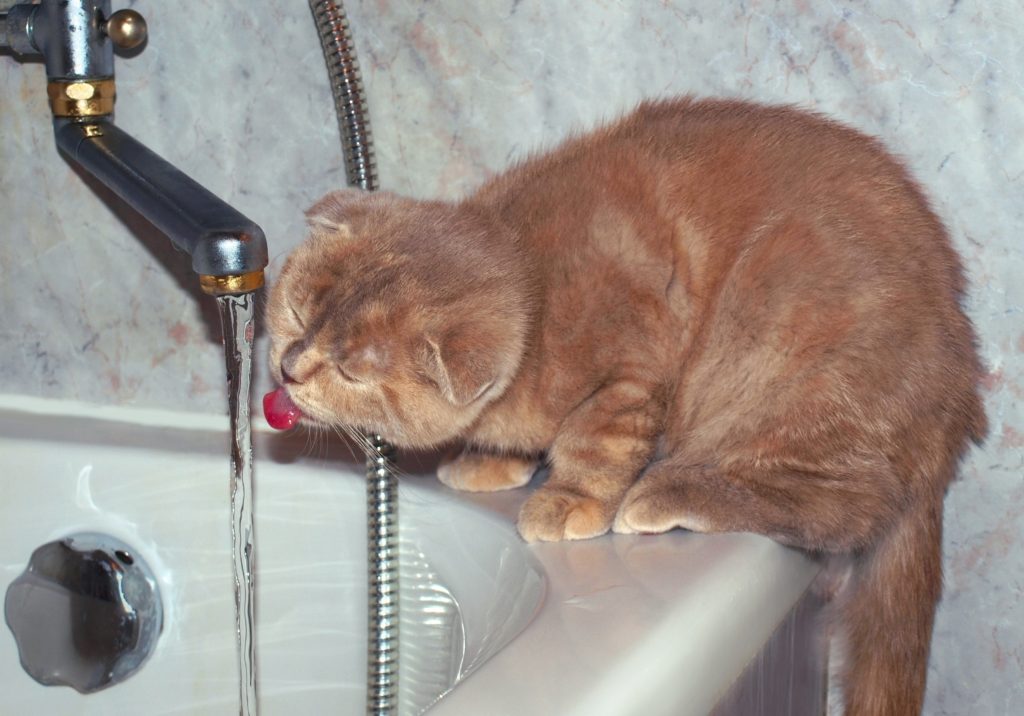
There are many reasons why a cat, strangely enough, would prefer to drink water from the toilet rather than from a water bowl. Reasons for this may include;
– Cats enjoy fresh cold water. The water in the toilet bowl may be a lot fresher than water that has been standing a while in their water bowl which may have become warm and stale.
– Drinking from the toilet bowl may be associated with fun and play time. Having seen the water swirling round after flushing may lead to further investigation and curiosity by your cat. It has been known that some cats may even learn how to flush!
Clearly, there are many risks and dangers associated with cats drinking from the toilet bowl. Kittens are in danger of falling in and drowning, as so could any age or size cat hurt themselves. Chemical cleaners are likely to be used in the toilet which may be toxic. Even fatal to your cat. The toilet is the perfect breeding ground for germs and bacteria and can pose a health risk your cat.
There are several simple, quick and easy steps to prevent this:
– Keep the bathroom door shut and toilet lids down thus making any temptation impossible.
– Ensure the water in your cat’s bowl is changed daily to ensure freshness.
– On a hot day add ice cubes to your cat’s water to keep the water cooler for longer.
– Ensure the water bowl is cleaned daily getting rid of any food debris, dirt or cat fur.
– A water fountain can tick a few boxes here – fresh, clean, oxygenated water and satisfy any play requirements around flowing water.
– Ensure that your cats environment includes plenty of stimulation to fulfil their needs. Spend time playing with your cat, introduce new toys and providing puzzle feeders will make the toilet water bowl fun a distant memory.
8. My cat refuses to drink water
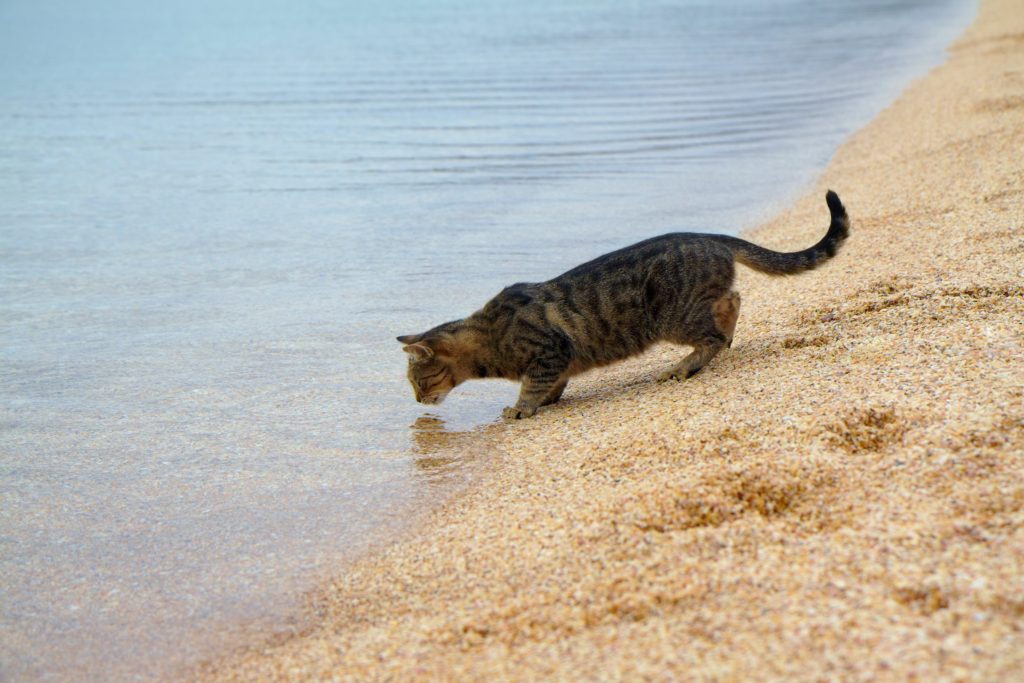
If your cat is fed wet food, then water consumption is less of a concern as moisture content from the food is likely to be sufficient. A diet based on dry food would be more than likely to naturally encourage the need for more water.
There are several things that you can do to encourage water drinking:
– Try various water bowls to see if your cat has a preference. Some cats simply do not like the smell of plastic bowls.
– Change the water daily – cats enjoy fresh, cool water.
– Ensure the water bowl and food bowl are separate, cats don’t usually like their food and water being close together.
– If you have more than one cat, ensure there are multiple water bowls in various locations. This will reduce friction or any stress with sharing water bowls.
– Some cats may be fussy with the taste of water. If they don’t seem keen on tap water, try rain water or bottled water.
– Water fountains tend to be a huge hit with some cats providing fresh, clean, oxygenated, flowing water.
– Experiment with the temperature of water, some may prefer room temperature with others preferring ice cold water.
– Offer ice cubes as an alternative especially on a hot summer’s day.
– Adding ice cubes into your cat’s food can increase their water intake without them realising it. While the ice cube is being licked having taken on the delicious flavour of the food, your cat’s water intake is increasing too,
– Serve smaller, more frequent meals. Generally, eating will prompt your cat to become thirsty therefore may encourage a poor drinker to approach the water bowl more often.
If your cat stops drinking water entirely, it is important to take her to the veterinary for a health check.
Most of the above problems are very common and easily rectified. Usually it’s a case of trial and error and just seeing what works for your cat.
Other articles you may find of interest:
How much water does a cat need?
